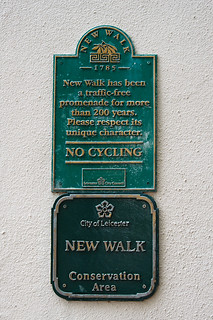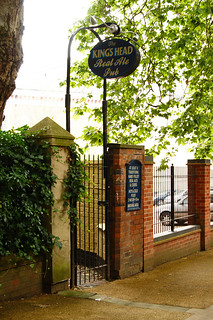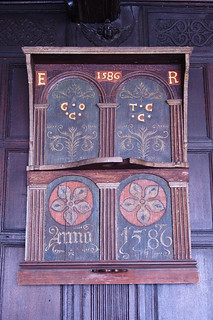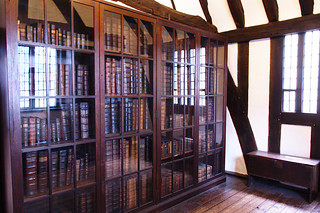It’s the 800th anniversary of the first issuing of Magna Carta this year, and so there are currently a flurry of programmes about the document on the BBC on both radio and TV. We been listening to the Melvyn Bragg presented radio series that was on at the beginning of the year as our Sunday breakfast listening. This was a four part series that covered the context for the document, the thing itself, and its legacy.
The first episode was looking at the context for the original “signing” of Magna Carta (it wasn’t in fact signed, as was customary at the time it was validated using the signatories’ seals). The king of England in 1215 was King John, who is a notoriously bad king – think Robin Hood, John is generally the king in those legends. It’s not without its basis in fact – John was always looking out for his own interests rather than those of the realm. He wasn’t even loyal to those who might’ve thought they were his friends – he’d turn against them if it was convenient or if that got him more money or land or power. Unsurprisingly the leading nobles of the day, the barons, weren’t terribly fond of John. Their grievances were that he acted as if he was above the law, he started taking away lands without even a figleaf of legal right to them, and importantly he also lost wars. In particular John managed to lose the bulk of the Plantagenets’ lands in modern France, which was humiliating for the crown.
An earlier crisis around 1205 that turns out to be relevant to the conflict was the appointment of a new Archbishop of Canterbury. This was contested – John had a preferred candidate and the canons of the cathedral had a preferred candidate, and the two sides couldn’t come to agreement. Eventually the Pope intervened and appointed Stephen Langton (who was neither sides’ preference) but John refused to accept this. The Pope then placed England under interdict (which meant that priests would not perform the sacraments), a state of affairs that lasted until 1213 when John capitulated. He also sweetened the deal declaring that the Pope was now the feudal overlord of England (thus had secular power in England as well as religious). Archbishop Langton was to be the mediator in the 1215 conflict between John and the barons.
In the second episode Bragg covered the 1215 conflict, and the events surrounding the initial issuing of Magna Carta. At this time King John was still failing to do anything useful in a military sense – this is important as military prowess was an important virtue for a king to demonstrate in order to show himself a true king. Wars are also expensive, so a campaign in France that is lost is a great waste of money which will’ve been primarily raised via taxing the barons. Civil war actually broke out in the summer of 1215, and crucially the city of London joined in the conflict on the side of the barons. John was in an unwinnable situation, and was forced to meet with the barons and come to terms with them. The meeting were held in June 1215 at a place on the Thames called Runnymede – this was neutral territory that was regarded as safe by both sides as it would be difficult to set up an ambush there. The barons showed up in force, and camped there with their army. This was somewhat of a surprise to John who had expected a delegation, so instead of camping on Runnymede himself he stayed nearby and visited during the day to negotiate.
The treaty that was eventually negotiated and sealed at Runnymede is the first iteration of the Magna Carta (although it wasn’t called that at the time). It is both sweeping and curiously specific. So there are the well known clauses that place the king under the law and guarantee the right of no imprisonment save by trial by one’s peers or due course of law. And there are also many clauses about particular grievances, for instance prohibiting fishweirs on the Thames which was of paramount interest to the merchants of the City of London (as the fishweirs impeded progress of shipping on the Thames). John wasn’t actually happy with the treaty, in particular a crucial clause that appointed a council of 25 barons to oversee the King’s actions. However he signed it because there wasn’t much other option, and was even forced to start instituting it before the two sides left Runnymede.
The third episode of this series looked at the immediate aftermath of the issuing of Magna Carta. The first thing John did after the dust had settled was to try to overturn the treaty. As I said in the last paragraph he was particularly unhappy with the clauses granting a council of barons power to enforce the treaty, and the situation was not helped by them treating the King disrespectfully. There were clauses in Magna Carta that were intended to prevent John wriggling out of it, but he made use of his new good relations with the Pope. Having given the Pope feudal overlordship of England meant that the Pope had legal standing to declare the treaty invalid, which he did at John’s request.
Unsurprisingly this did not go down well with the barons – the political situation returned to how it had been before Runnymede, and civil war broke out again. The Pope was now firmly on John’s side and directed Langton to excommunicate the barons who are in rebellion. Langton, however, resisted this (and incurred the Pope’s displeasure) because if he was to be an effective mediator then he couldn’t been seen to be on one side or the other. The French got involved in the civil war, coming in on the side of the barons and by 1216 the south of England is mostly ruled by the son of the French King. If John had not died at this point then the history of England would’ve been quite different!
However John did die, and his 9 year old son Henry took the throne. One of the first things that Henry III’s regents did was to reissue Magna Carta. This was intended to woo the disaffected barons back to the side of the English monarchy, and it was successful. With the barons back on their side Henry III’s forces were able to retake the south of England and drive out the French prince.
This was only the first reissuing of the Magna Carta, the next time was when Henry came of age in 1225. This was in part a symbolic act intended to convey that he would (unlike his father) rule in accordance with the law. The version of Magna Carta issued at this point was partly rewritten (by Langton amongst others), taking out some of the unpalatable clauses (like the council of the barons). This version is the definitive one that is meant when we refer to Magna Carta, and it was reissued several times over the next 100 years.
In the fourth episode Bragg talked about how Magna Carta has become enshrined in global consciousness as a totemic symbol of democracy. Often by people who don’t know exactly what is in it, just that it guarantees the rights of the people to just treatment under the law. I was aware before of the sort of place it occupies in British culture, but I hadn’t realised just how important it is to US culture. Bragg talked to some US historians who explained that the Bill of Rights in the US Constitution is deliberately based on clauses from the Magna Carta. And it still has enormous importance as a precursor document for US democratic principles. The monument in Runnymede commemorating the signing of Magna Carta was erected by US lawyers.
The end of the programme was about whether or not Magna Carta still has relevance today – particularly as the actual clauses in the document are mostly no longer law (I believe there are only 2 left on the statute books out of the original 60-something). Bragg’s conclusion was that it’s not the details that are important, and it hasn’t been for several hundred years. But that Magna Carta is the start of a paradigm shift that we pretty much take for granted today. That people have the right to be dealt with in accordance with the law rather than at the whim of the ruler.














































